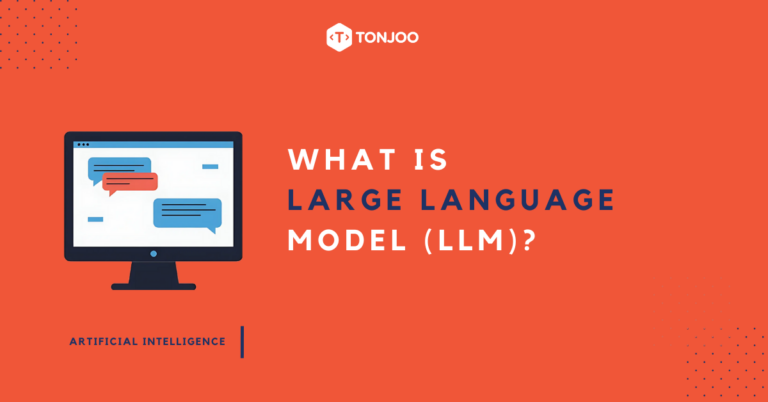
What is LLM? In recent years, rapid advancements in Artificial Intelligence (AI) have ushered in a wave of innovations that are transforming how we interact with technology. One of the most significant breakthroughs has been the development of Large Language Models (LLMs).
Behind these text-based technological advancements lies a concept called Large Language Models, or LLMs. Let’s take a closer look at what they are.
Table of Contents
What Is LLM?
A Large Language Model (LLM) is a type of artificial intelligence (AI) model specifically designed to understand, generate, and manipulate human language.
The term “Large” refers to two main aspects: first, the enormous amount of text data used to train these models; and second, the number of parameters the model contains.
In this context, parameters are internal variables that the model learns during the training process, which determine how it responds to new input. Modern LLMs can have billions or even trillions of parameters.
How Large Language Models (LLMs) Work
The operation of a Large Language Model involves two primary phases. Here’s how an LLM works:
1. Training Phase
The first phase in how an LLM works is training. This phase involves three key processes:
- Data Collection: The process begins with gathering massive amounts of text data from a wide variety of sources. The more diverse and high-quality the data, the more capable the resulting model will be.
- Learning Process: The model is “fed” this text data. During this process, the LLM learns to recognize patterns, relationships between words, sentence structures, grammar, and context. A common technique is to train the model to predict the next word in a sequence or to fill in missing words in a sentence.
- Parameter Adjustment: The millions to billions of internal parameters are automatically adjusted during training. The goal is for the model’s predictions to become increasingly accurate over time. This process requires immense computational power and a significant amount of time.
2. Usage/Inference Phase
- Input (Prompt): A user provides text input, known as a “prompt.” This can be a question, a command, or the beginning of a sentence.
- Processing: The LLM uses the knowledge it acquired during the training phase to understand the intent of the prompt.
- Output (Response): Based on its understanding, the LLM generates new text as a response. It does this by predicting words sequentially, where each new word is based on the preceding words and the context of the prompt.
Types of LLMs
There are countless types of LLMs in the world today, each with different functions and uses. Here are some of the key LLMs you should know:
1. GPT – OpenAI
OpenAI‘s GPT series was one of the first LLMs to capture public attention. The GPT (Generative Pre-trained Transformer) series is renowned for its exceptional ability to generate human-like text, answer questions, write code, summarize content, and perform various other language tasks. GPT-4 and GPT-4o show significant improvements in reasoning and multimodal capabilities (processing text and images). ChatGPT is a popular application that uses these models.
Examples of the GPT series include: GPT-3, GPT-3.5, GPT-4, GPT-4o.
2. Google Gemini
Another equally popular LLM is Google Gemini. Developed as Google’s most advanced multimodal model, Gemini is designed to understand and generate information from various types of input, including text, code, images, audio, and video. Gemini comes in several versions (Ultra, Pro, Nano) and forms the foundation for many of Google’s AI products, including the Gemini chatbot (formerly Bard).
Examples of the Google Gemini series include: Gemini 1.5 Flash, Gemini 1.5 Pro.
3. LLaMA (Large Language Model Meta AI) Series – Meta AI
Meta AI, Facebook’s development division, has also joined the competitive landscape of Large Language Models with its LLaMA (Large Language Model Meta AI) series. Several early versions of LLaMA, such as Llama 2 and Llama 3, have been released as open source for certain commercial uses.
Examples of LLMs from Meta AI include: LLaMA, Llama 2, Llama 3.
4. Claude Series – Anthropic
The Claude series is an LLM created by the developer Anthropic. Anthropic developed Claude to be a safe, intelligent, and reliable AI tool. Claude is particularly popular among programmers for its ability to handle complex commands and long conversations.
Prominent models in the Claude series include: Claude, Claude 2, Claude 3 (Opus, Sonnet, Haiku).
5. DeepSeek
DeepSeek is an LLM from China that made a sensational debut. One of the most notable aspects of DeepSeek is its commitment to open source. Many of their models, including the DeepSeek Coder and DeepSeek LLM variants (including DeepSeek-V2), have been released as open-source.
Examples of LLM Applications
An LLM’s ability to understand and generate text has opened up numerous practical applications across various fields. Here are some examples:
1. Chatbots and Virtual Assistants
The most popular example is ChatGPT, which can answer questions, hold discussions, offer advice, and more. Popular virtual assistants like Google Assistant and Apple’s Siri are also increasingly integrating LLM capabilities.
2. Content Creation
LLMs can be relied upon to create various types of content. Creative processes such as writing blog articles, planning social media posts, composing emails, poetry, video scripts, and even song lyrics can be executed well by modern LLMs.
3. Language Translation
LLMs also possess the ability to translate text from one language to another with ever-increasing accuracy. Google Translate is arguably a perfect example of how LLMs can assist in language translation.
4. Text Summarization
LLMs can summarize long documents, news articles, or reports into key points that are easier to digest.
5. Sentiment Analysis
Analyzing text, such as product reviews or social media comments, to determine whether the expressed sentiment is positive, negative, or neutral can be done effectively by LLMs.
6. Coding Assistance
Assisting software developers by writing code, explaining code, or finding errors (debugging).
7. Smarter Information Retrieval
Search engines are beginning to use LLMs to better understand user queries and provide direct, relevant answers.
Understanding the Potential of Large Language Models
In simple terms, an LLM is a sophisticated AI program trained on a massive volume of text data, enabling it to interact using human language with an unprecedented level of sophistication.
Large Language Models have immense potential to transform how we interact with information and technology. Despite their incredible capabilities, it’s important to remember that LLMs are tools that learn from the data they are given. Therefore, the quality and biases within that data can influence their output.
Stay updated with the world of artificial intelligence only at Tonjoo.
Read similar articles by Moch. Nasikhun Amin on the Tonjoo blog about WordPress, WooCommerce, plugins, and other web development topics.



